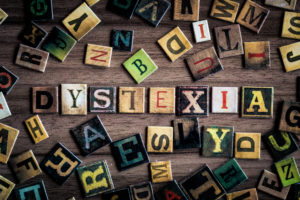
Dyslexia is the most common of all neurodiversity types. In fact, according to The Yale Center for Dyslexia and Creativity, Dyslexia affects 20 percent of the human population and represents 80–90 percent of the Neurodiverse community. This condition is also the first scientifically recognized learning disability; Adolf Kussmaul first referenced Dyslexia as “Word Blindness” over 140 years ago, in 1877. In the 1930s, upon the advent of compulsory education law in the United States, Samuel Orton and Anna Gillingham introduced revolutionary education therapies that effectively treated Dyslexia. Together the two developed a revolutionary auditory, visual, and kinesthetic approach to reading remediation documented within the Gillingham Manual that remains the most effective Dyslexia education model to date. So, why are so many educational institutions worldwide still struggling to provide appropriate academic supports and resources for Dyslexia? As the mother of a profoundly Dyslexic child, I find this question exasperating. However, I know action is much more effective than anger, and likely one of the greatest challenges with Dyslexia is its extraordinary skill as a Covert Operator.
People with Dyslexia are Masters of Disguise; I know this firsthand as the wife and mother of Dyslexics. One of the hallmarks of this particular neurodiversity type is normal to above-average intelligence. The Dyslexics I know well, are brilliant. Most Dyslexics have extraordinary aptitude in at least one area of intelligence, typically Visual-Spatial intelligence. For these reasons, they often become phenomenal artists, surgeons, engineers, and mechanics. People with Dyslexia are great at camouflaging their reading, writing, and spelling deficits. Many Dyslexics, even Dyslexics with Dysgraphia, master the art of copying at a very early age. I recall one of my children frequently bringing home Kindergarten classwork with nearly perfect handwriting. I soon discovered at parent-teacher conferences that my child was destroying every in-class assignment that they could not copy perfectly. I found it even more shocking that my kiddo could not produce any legible work without a visual reference. This Covert Operator was not fond of my efforts as a mother advocate. Dyslexia worked to evade discovery at every turn.
Camouflage is not Dyslexia’s only covert skill. Dyslexia is also well-versed in the art of illusion. Dyslexia can imitate a Visual Processing Disorder, ADHD, Memory Impairments, and Emotional Disabilities. Dyslexic can also coincide with these disorders and others like Autism, Visual Impairment, Severe Speech Delay, and Childhood Apraxia of Speech. In my home, Sensory Processing Disorder, Dyslexia, Severe Speech Delay, Childhood Apraxia of Speech, Anxiety, ADHD, and Visual Impairment are all part of our Neurodiversity profile. You can only reveal the illusion through the unveiling of one mask at a time. This process requires patience, fortitude, and grit. I have found incredible success working to uncover the masks as they appear. Typically behavior problems are the first to surface and result from sensory processing challenges or Sensory Processing Disorder, a characteristic common among Neurodiverse. Most states offer free or low-cost evaluations and therapy for one to three-year-old children experiencing developmental delays. The face of Dyslexia does not usually reveal itself until 1st through 3rd grade; remember you are dealing with a Covert Operator possessing extraordinary skills. If you are suspicious of Dyslexia in your child remember to address the masks one at a time; addressing behavior issues first.
Like all prolific undercover agents, this Covert Operator is highly elusive. It can take a lifetime to reveal the depth and breadth of Dyslexia’s resources, potential power, weaknesses, and inroads. Dyslexia always presents with conundrums, mystery, and cunning. My local university is one of the most valuable resources ever tapped in my cat and mouse game with Dyslexia. The brilliant minds of professors at Northern Arizona University have provided me with invaluable insights in my search to reveal this emissary. Most specifically, NAU provided me with an in-depth picture of Dyslexia’s impact on my child’s mind through an innovative and cost-effective Comprehensive Evaluation. This evaluation revealed the information essential to ensuring my child’s efficacy, equity, and empowerment in the academic arena. Unlocking the resources of your local universities can be as powerful as calling in the resources of the FBI or CIA. When Dyslexia is at work you need the right detectives at hand.
 As a Covert Operator, Dyslexia can camouflage itself, create illusion and evade detection. For this and many other reasons, Dyslexia remains a poorly addressed aspect of most modern educational institutions. However, within the last 7 years, the U.S. Department of Education has released new guidance that supports early detection and the provision of specific education supports for Dyslexia. Dyslexia is a hidden disability. This makes detection challenging and has obviously negatively impacted society’s response to this neurological difference. However, ruminating over the many possible reasons for our lack of progress in this regard does nothing to advance our quest to develop efficacy, equity, and empowerment for Dyslexics. We simply must re-exam our approach to Dyslexia and the full spectrum of neurodiversity if we aim to lead a more enlightened existence. In part 2 of this blog, coming this Monday, we will explore how to turn Dyslexia, the Covert Operator, into Dyslexia, the Creative Ally.
As a Covert Operator, Dyslexia can camouflage itself, create illusion and evade detection. For this and many other reasons, Dyslexia remains a poorly addressed aspect of most modern educational institutions. However, within the last 7 years, the U.S. Department of Education has released new guidance that supports early detection and the provision of specific education supports for Dyslexia. Dyslexia is a hidden disability. This makes detection challenging and has obviously negatively impacted society’s response to this neurological difference. However, ruminating over the many possible reasons for our lack of progress in this regard does nothing to advance our quest to develop efficacy, equity, and empowerment for Dyslexics. We simply must re-exam our approach to Dyslexia and the full spectrum of neurodiversity if we aim to lead a more enlightened existence. In part 2 of this blog, coming this Monday, we will explore how to turn Dyslexia, the Covert Operator, into Dyslexia, the Creative Ally.
